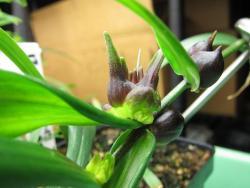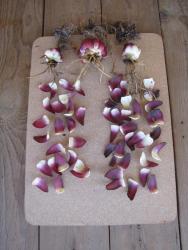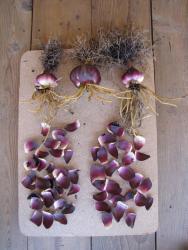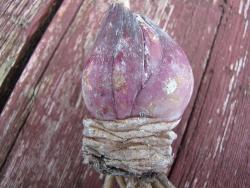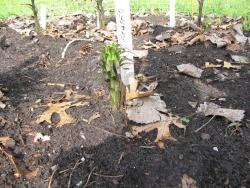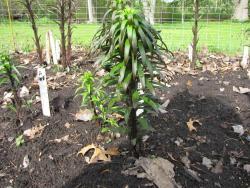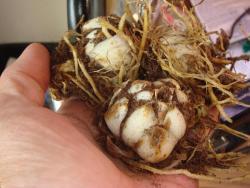Joe, This is an semi-original experiment. My thought is that the daylily, hosta and orchid growers have been using PGRs for a while to get increases and proliferations, so it should work for lilies. This is on an asiatic, but I'm certain it will work on OTs.
Lorn, You are correct in that I waited until I had very early bud set before I applied PGRs. This is on the only lily I currently have available to experiment with. It is an asiatic that was held over in the basement from last years seedlings as it had not shown enough growth to put out for the winter. It is in a 3.25" pot and is now a few feet tall, although laying sideways on the shelves as my shelves are spaced only about a foot apart, and needless to say, that large a plant would just fall over in that small a pot. It now has 8 nice buds (four pairs of buds spacing out on the stem). Note that there is no root growth on these bulbils. This is what I have to figure out. In aTC lab plant cells are originally started in a multiplication media, and eventually transferred over to growth media, so it may require a separate application of a different mix of PGRs applied at a certain time.
I had made a PGR application to another plant where some of the growths look more like undifferentiated callus tissue that forms in early stage tissue culture. Picture is attached. As I said, this is a new experiment and needs more work.
